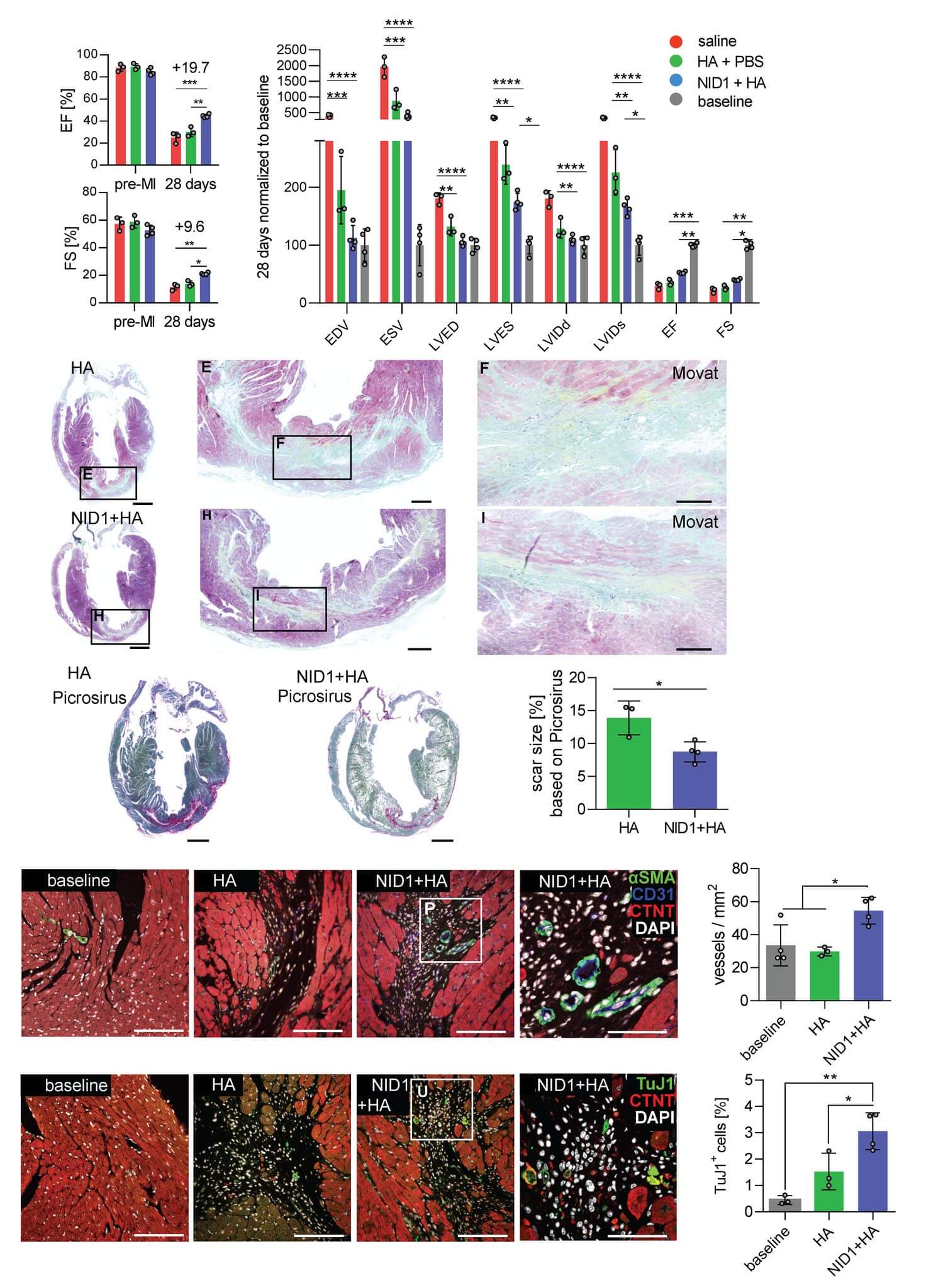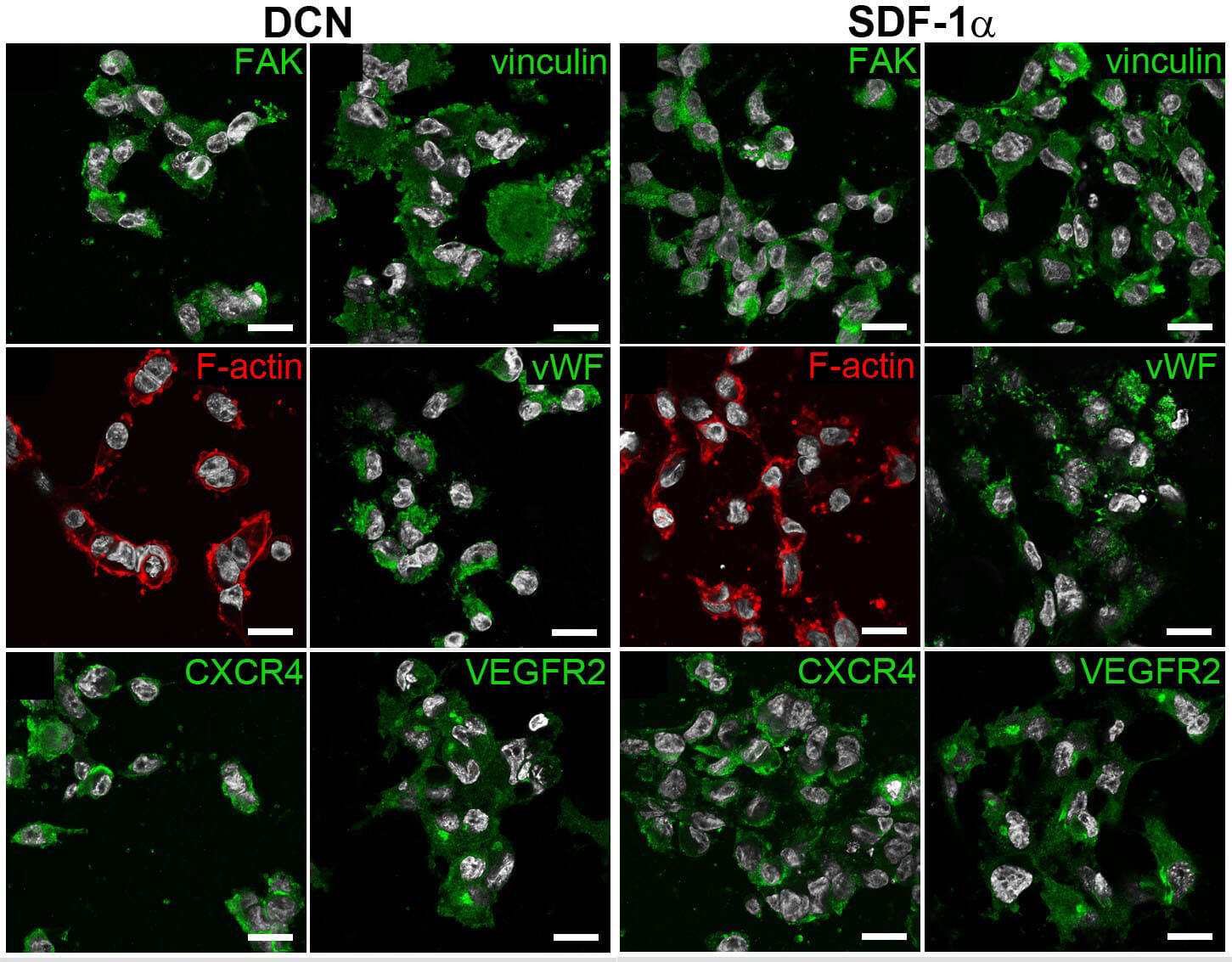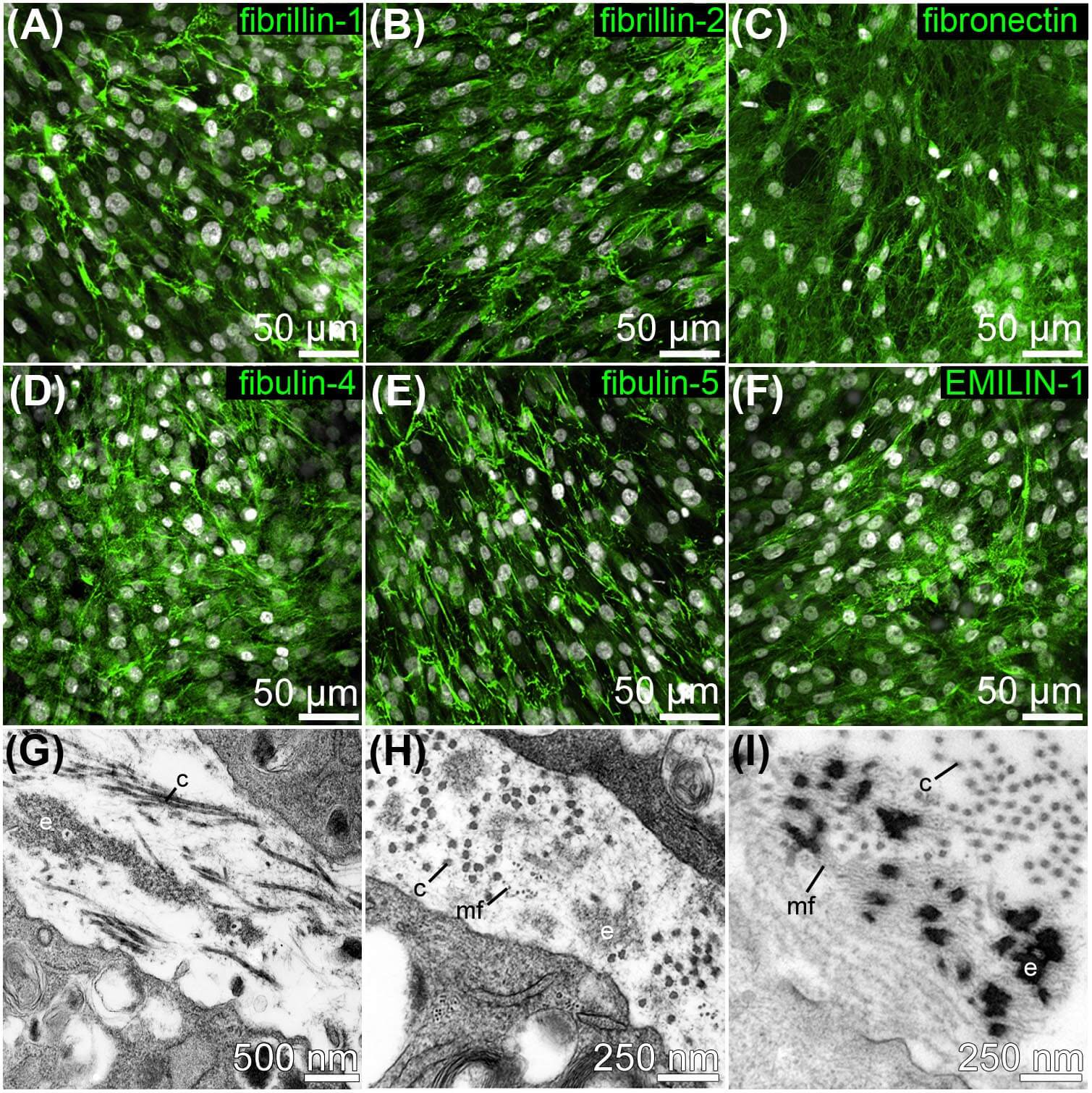Nidogen-1 (NID1) is a sulfated monomeric glycoprotein consisting of three globular domains: G1, G2 and G3 and with many epidermal growth factor repeats. It is an underinvestigated ECM basement membrane protein that is mostly recognized as a linker protein of COL4 and LAM. It has been suggested to play a role in angiogenesis, hepatic regeneration, and regenerative axon growth and guidance. Our research has demonstrated a potential cardiogenic effect of NID1 on differentiating pluripotent stem cells. We were further able to demonstrate that NID1 attenuates the apoptotic effect of hypoxia in cardiomyocytes and pancreatic beta cells via the αvβ3 integrin and beneficially modulates immune responses in vitro. We showed that NID1 significantly increases heart function and angiogenesis, while reducing fibrosis, in a mouse postmyocardial infarction model; therefore, demonstrating the protective and regenerative potential of NID1 in ischemic conditions.

Nidogen-1

Decorin
Decorin (DCN) is a negatively charged dermatan or chondroitin sulfate proteoglycans belonging to a group of small leucine-rich proteoglycans. It plays an important role in collagen fibrillogenesis, growth factor modulation, cell growth regulation, and can bind transforming growth factor β, serving as a growth factor sequestering sink in the matrix surrounding most cells. It is highly expressed in a variety of organs in the human body and plays a crucial role in organogenesis. In our work, we demonstrated that DCN reduces T cell response and attracted innate immune cells, which are responsible for ECM remodeling. We showed that a significantly higher number of endothelial progentitor cells attached on DCN- and SDF-1α-coated scaffolds, when compared with the uncoated controls. Interestingly, DCN showed a higher attractant effect on human endothelial colony forming cells (hECFCs) than SDF-1α. This is of interest as SDF-1 has been used in clinical trial to attract hECFCs for wound healing applications.

Elastic Fibers
Elastin is a non-soluble, extremely durable protein. Elastic fibers consist of a variety of components, including microfibrillar proteins (fibrillins), linking proteins [fibulins, elastin microfibril interfacers (EMILINs), microfibril-associated glycoproteins (MAGPs)], soluble factors [e.g. transforming growth factor (TGF) beta] and the core protein elastin. Elastic fibers are extremely important during development and in adult life. We have investigated the process of human elastogenesis and translated those discoveries into systems that can create elastic fibers in vitro for applications in cardiovascular tissue engineering.